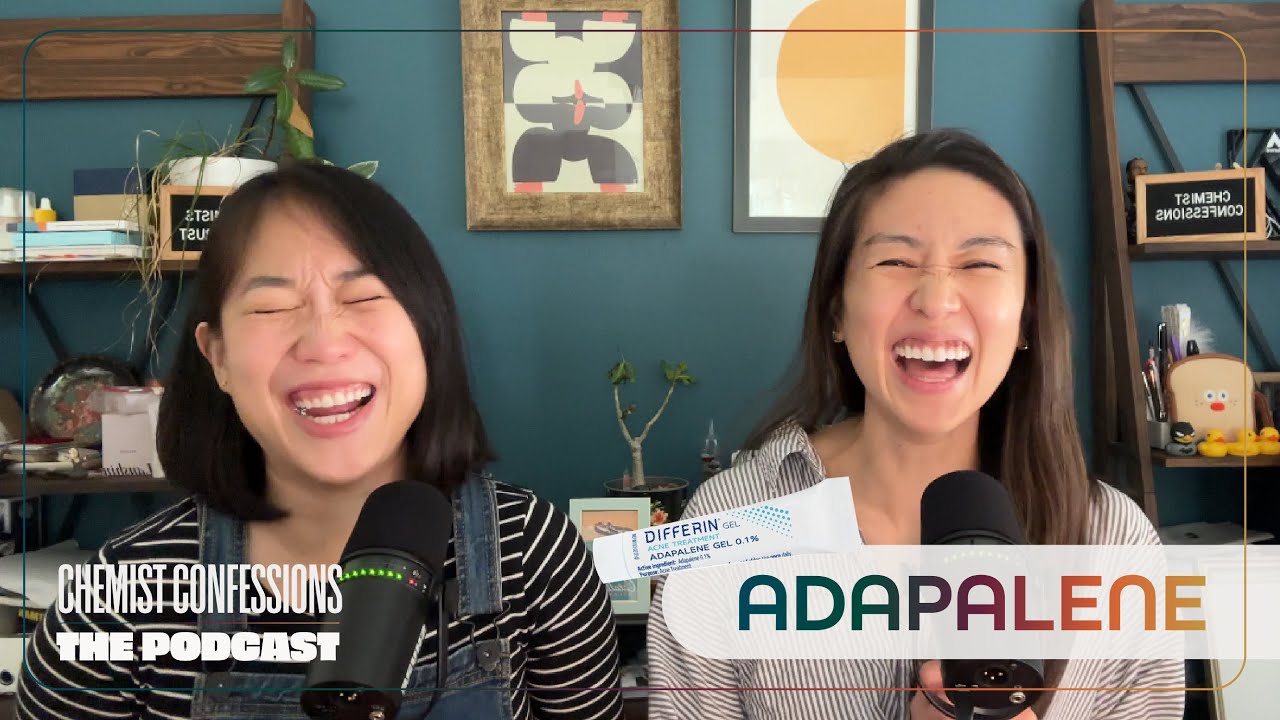Psychedelics for the Treatment of Cluster and Migraine - Spotlight on Migraine - Episode 31
Summary
TLDRDieses Podcast-Episode des Spotlight on Migraine, moderiert von der Association of Migraine Disorders, beleuchtet die heutige Forschung an der Yale University zur Behandlung von Migräne und Cluster-Kopfschmerzen mit psychedelischen Pilzen. Dr. Christopher Gottschalk, ein Kopfschmerz-Spezialist, teilt Erkenntnisse über die potenziellen Vorteile von Substanzen wie Psilocybin und LSD und ihre Verwendung als Therapieansätze. Er diskutiert auch die Veränderungen in der Behandlung von Kopfschmerzen und die Notwendigkeit, Stereotypen und Fehlinformationen um diese erschwerenden Krankheit zu bekämpfen. Die Diskussion umfasst die Charakteristika von Cluster-Kopfschmerzen, die Intensität des Schmerzes, die Selbstberichte von Patienten und die Ergebnisse kontrollierter Studien mit psychedelischen Substanzen. Die Zuhörer erfahren auch über die derzeitigen Behandlungsmöglichkeiten für Cluster-Kopfschmerzen und die Hoffnung auf zukünftige Fortschritte durch innovative Therapieansätze.
Takeaways
- 🌟 Die Behandlung von Kopfschmerzen wie Migräne und Cluster-Kopfschmerzen befindet sich in einer revolutionären Phase mit vielen neuen Behandlungsansätzen.
- 🍄 Forschungen an der Yale University untersuchen die Verwendung von psychedelischen Pilzen zur Behandlung von Kopfschmerzstörungen.
- 🧪 Psychedelische Substanzen wie Psilocybin und LSD scheinen bei der Behandlung von akuten Kopfschmerzattacken und zur Prophylaxe von Cluster-Kopfschmerzen wirksam zu sein.
- 🏥 Zusammenarbeit zwischen Amgen und Novartis führte zur Entwicklung von bahnbrechenden Therapien für Alzheimer und Migräne.
- 🚫 Die Stereotype und Missverständnisse um Migräne als erschwerende Krankheit müssen überwunden werden.
- 🧬 Die chemische Abstammung von Medikamenten, die zur Behandlung von Migräne und Cluster-Kopfschmerzen verwendet werden, von psychedelischen Substanzen wird diskutiert.
- 📊 Eine Online-Umfrage zu Cluster-Kopfschmerzen zeigt, dass diese extrem schmerzhaft sind und der Suizidrate in dieser Patientengruppe um das Zehnfache höher ist als in der Normalbevölkerung.
- 💊 Aktuelle Behandlungsmöglichkeiten für Cluster-Kopfschmerzen umfassen reine Sauerstoff-Inhalation, Sumatriptan-Injektionen und eine Reihe von Medikamenten zur Langzeittherapie.
- 📈 Eine kontrollierte Studie mit einem nicht-halluzinogenen psychedelischen Wirkstoff zeigte eine signifikante Reduktion der Angriffsanzahl bei Cluster-Kopfschmerzen.
- 🧠 Die Wirkung von psychedelischen Substanzen wird auf die Interaktion mit dem 5-HT_2A-Rezeptor zurückgeführt, was ihre potenzielle Nutzeffektivität erklärt.
- 🇺🇸 An der Yale University laufen derzeit kontrollierte Studien mit Psilocybin-Extrakt für Cluster- und Migränekopfschmerzen, wobei bisher ein gutes Verträglichkeitsprofil beobachtet wurde.
Q & A
Was ist das Hauptthema der in diesem Podcastserie behandelten Episode?
-Das Hauptthema der Episode ist die Forschung über die Verwendung von psychedelischen Pilzen zur Behandlung von Migräne und Cluster-Kopfschmerzen.
Welche Universität wird in der Episode als Forschungsstandort genannt?
-Die Yale University wird als Forschungsstandort für die Behandlung von Kopfschmerzen mit psychedelischen Pilzen genannt.
Welche Pharmaunternehmen werden in der Episode als Sponsoren erwähnt?
-Als Sponsoren werden in der Episode Amgen, Novartis und Alder BioPharmaceuticals genannt.
Was ist das Ziel von Amgen und Novartis bei ihrer Zusammenarbeit?
-Amgen und Novartis arbeiten zusammen, um bahnbrechende Therapien für Alzheimer und Migräne zu entwickeln und um Migräne und die umliegenden Vorurteile und Missverständnisse zu bekämpfen.
Wie wird ein Cluster-Kopfschmerz definiert?
-Ein Cluster-Kopfschmerz ist eine Form von primärer Kopfschmerzstörung, die unilaterale Schmerzanfälle mit anderen Symptomen wie bei Migräne hat, aber zu den trigeminus-autonomen Kopfschmerzen gehört, was bedeutet, dass es Schmerzanfälle auf einer Seite des Gesichts gibt, die mit Veränderungen der autonomen Nerven verbunden sind.
Was ist die Prävalenz von Cluster-Kopfschmerzen?
-Die Prävalenz von Cluster-Kopfschmerzen liegt zwischen 1 in 1.000 und 1 in 5.000.
Wie wird der Schmerz von Cluster-Kopfschmerzen im Vergleich zu anderen Schmerzen wie Migräne, Gicht oder Geburt beschrieben?
-Der Schmerz von Cluster-Kopfschmerzen wird als extrem intensiv beschrieben und ist auf einer Schmertschkala von 1 bis 10 höher als Schmerzen durch Migräne, Gicht und Geburt.
Welche Behandlungsoptionen werden für Cluster-Kopfschmerzen genannt?
-Behandlungsoptionen für Cluster-Kopfschmerzen umfassen Inhalation von reinem Sauerstoff, Sumatriptan-Injektionen, Verapamil, Lithium, Krampfmittel wie Topamax und Depakote, Steroide, Methylergonovine und Vagus-Nerv-Stimulatoren.
Was ist die aktuelle Haltung der Studierenden und Forscher bezüglich der Verwendung von psychedelischen Substanzen in der Behandlung?
-Die Studierenden und Forscher sind der Meinung, dass psychedelische Substanzen aufgrund ihres potenziellen Nutzens in der Behandlung von Kopfschmerzen untersucht werden sollten, unabhängig von ihren hallucinogenen Eigenschaften.
Welche Art von Studien werden derzeit an der Yale University durchgeführt?
-An der Yale University werden kontrollierte Studien durchgeführt, die die Wirksamkeit von Psilocybin-Extrakten oder Placebos bei Patienten mit Cluster-Kopfschmerzen und Migräne untersuchen.
Was ist das Nebenwirkungsprofil der in den Studien verwendeten Psilocybin-Dosen?
-Das Nebenwirkungsprofil der Psilocybin-Dosen ist sehr günstig, mit einigen Fällen von Übelkeit, vorübergehendem Unwohlsein, Schwindel, Aufregung und Kopfschmerzen, jedoch ohne schwerwiegende Nebenwirkungen.
Outlines

このセクションは有料ユーザー限定です。 アクセスするには、アップグレードをお願いします。
今すぐアップグレードMindmap

このセクションは有料ユーザー限定です。 アクセスするには、アップグレードをお願いします。
今すぐアップグレードKeywords

このセクションは有料ユーザー限定です。 アクセスするには、アップグレードをお願いします。
今すぐアップグレードHighlights

このセクションは有料ユーザー限定です。 アクセスするには、アップグレードをお願いします。
今すぐアップグレードTranscripts

このセクションは有料ユーザー限定です。 アクセスするには、アップグレードをお願いします。
今すぐアップグレード関連動画をさらに表示

(Patho-) Physiologie Schmerz - Schmerzarten, Grundzüge der Therapie, Nozizeptor TRPV1

Royalty To Working Class: The British Social Class System, Explained

Charité Clinical Journal Club (German) by Fred Luft - 07.08.2019

Quarantini - Gin Geschichte

#81) Can Adapalene be Used for Anti-Aging? | Chemist Confessions Podcast

Die Leber: Therapie mit Stammzellen
5.0 / 5 (0 votes)
